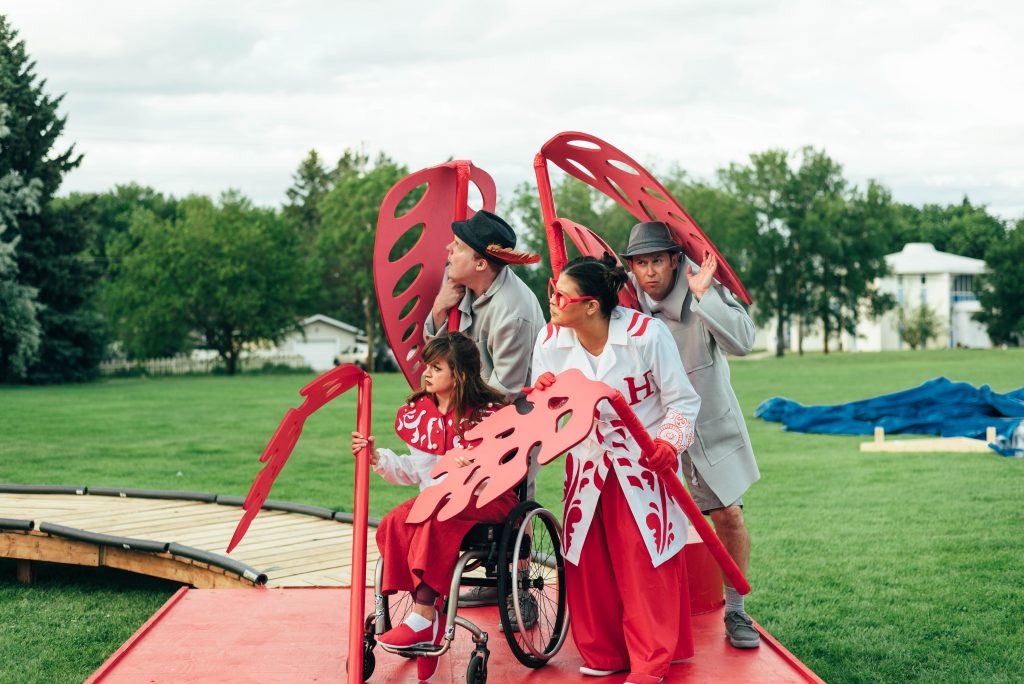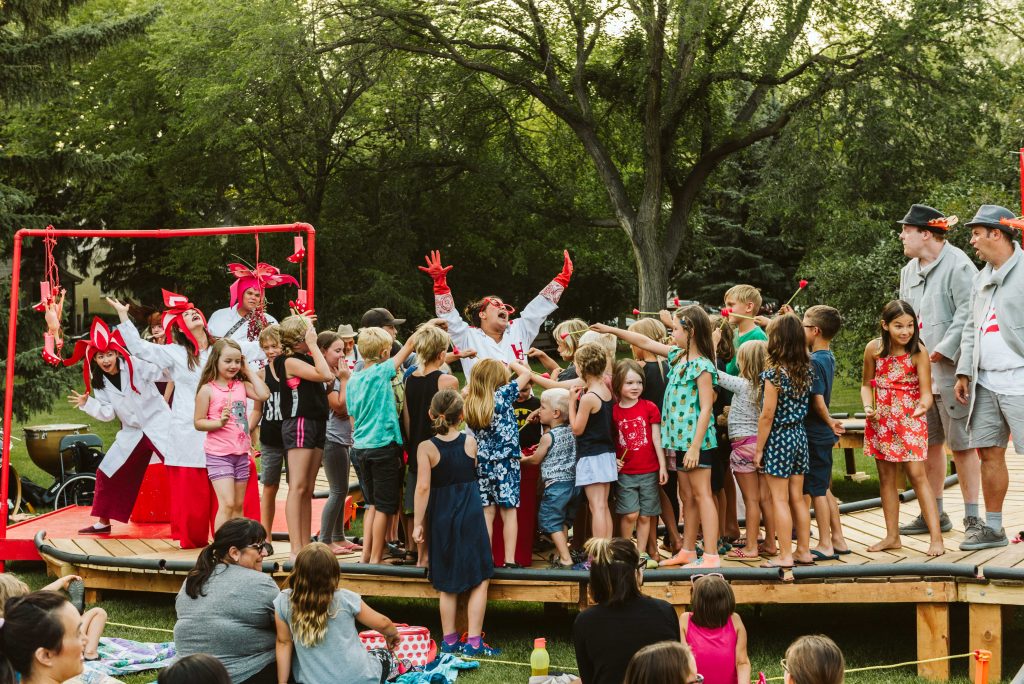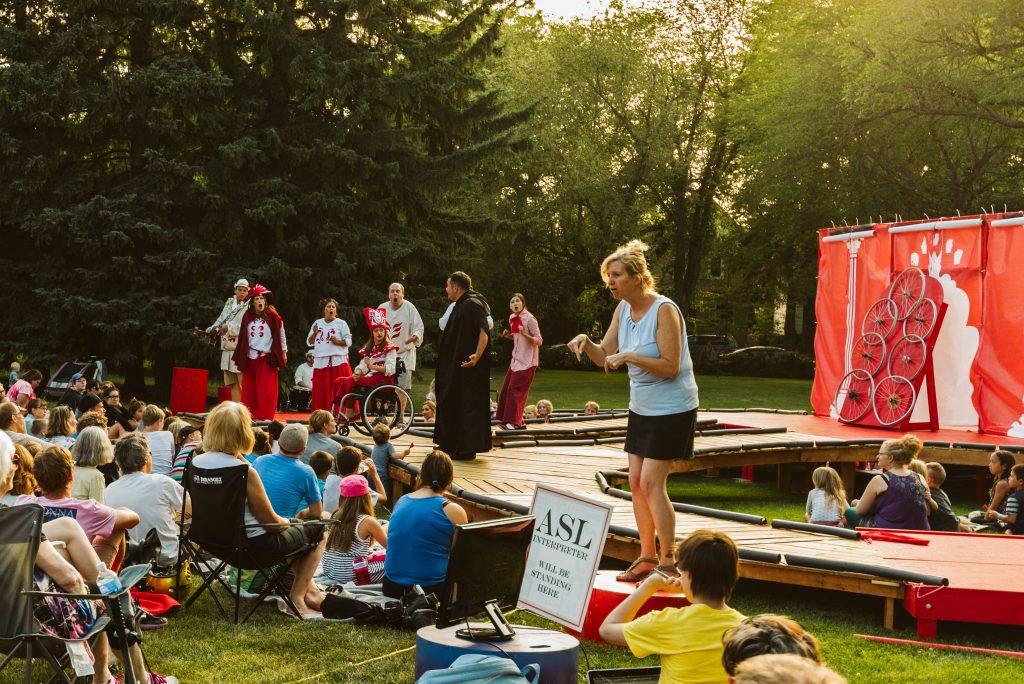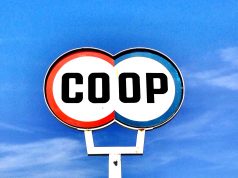
Photo by Ehjae Chan.
On July 2, 2018, Saskatoon’s Sum Theatre launched its sixth annual Theatre in the Park (TITP) with Queen Seraphina and the Land of Vertebraat, the story of a land where everyone is disabled, and therefore everything must be accessible.
The first three years of TITP had featured well-known, family friendly stories – Alice, Pied Piper and Hercules. In year four, addressing a desire to engage other sectors of the community, Artistic Director Joel Bernbaum and the company adapted Métis author Maria Campbell’s Little Badger and the Fire Spirit, and in year five, the Syrian folk tale The Lion and the Woodcutter. In 2017, Joel decided the show would focus on disability.
Sum commissioned Adam Pottle, an award-winning poet, novelist, and emerging playwright to write the summer show. I had served as dramaturg on Adam’s first play, Ultrasound, about deafness and Deaf culture. Cahoots Theatre’s 2016 premiere had required a huge outlay of additional resources: two deaf actors; American Sign Language interpreters throughout development to production; surtitles developed along with the text. In the process, Cahoots created the Deaf Artists & Theatres Toolkit, a resource for other artists and theatres who want to work together on a project that included deaf artists or had as its focus Deaf culture.

While the DATT offered some tools for the production of Seraphina, it did not address the host of new challenges the company faced. In my role as dramaturg, I found myself dramaturging not just the text, the staging, and the production elements, but the process (and in my head, I hear Kugler telling me, “Yvette, it’s always about the process”).
Like Queen Seraphina, actor Haley Brown uses a wheelchair, and although Haley participated in the development of the play from the beginning, generously consulting on the design of the set, we still kept discovering new ways to fail.
Evgenia Mikhaylova’s set featured a series of huge ramps in a rough figure 8 shape, but instead of being a continuous surface, the ramps were planked, like a boardwalk. For someone who uses a wheelchair, each gap between each plank offers resistance. Joel notes, “We had Haley and Chris (Dodd) and Michael (Martin), our three disabled artists, in the development workshop… we talked specifically with Haley about width of ramps, we talked about slope of ramps, and she went back to California and we forgot to consult or we neglected to consult about materials… as someone who does not wheel – I walk – when I was told by the builder that they were going to be boards right next to each other, I thought that makes sense, that’s fine and it never once occurred to me that that would be a big deal for someone who wheels.”
Further, the ramps had beautifully smooth edges, which was aesthetically very pleasing, but hazardous. What we needed instead was some kind of border rim so that the actor could feel if she was at the edge of the ramp and in danger of going right over.
Frustrations mounted. Everyone had been working so hard to make the work in a good way, and still there were gaps. How does an organization know what it doesn’t know? “ You make mistakes,” Joel says. “I’m glad we screwed up, otherwise we wouldn’t have learned. That’s how we know what we don’t know. It would be nice if it got a little less personal and a little less labour intensive… We’re all on the same team here… Is there a way at the top of the process that we could know everyone’s needs so that we could best meet everyone’s needs?”

One of the difficulties in working across culture is that one is often expected to be the cultural informant, to represent. During the fraught time, as the production crew worked to address the challenges with the set, I talked with Haley about that expectation. “I was just putting so much pressure on myself to do that,” she told me. “I didn’t know what anyone else’s experience or awareness was… I was like, ‘oh is this brand new for everyone? am I going to be the only one to bring up these issues?’ I worried that I was the only one in the room thinking about my disabled friends who are blind or who are hard of hearing and don’t speak sign language, or who are wheelchair users and can’t get out of their chair to push their chair across the grass…?”
Haley suggests hiring an access coordinator, which would reduce the pressure on the disabled performer to identify the gaps and suggest solutions, and would also make dealing with the challenges “a little less personal,” as Joel desires, but again raises the issue of resources. Queen Seraphina enjoyed huge support from the funders (including a Canada Council Sector and Innovation Development grant to train ASL interpreters for theatre), sponsors, and community groups, but the very act assembling the resources was a Herculean task. How does the company prioritize?
I too have responsibility, as the dramaturg, for not being able to foresee how the obstacles were going to manifest, but I too cannot know what I do not know, and cultural sensitivity is a process, not a product. We worked through it, with the generosity and patience of all involved, but these are not easy conversations, and some theatres and some artists may not be willing to invest the time and energy into having them.

For Sum Theatre, though, it was worth it because “if we don’t do it, it doesn’t happen.” Haley confirms this: “When Joel proposed it to me… he made it really difficult to say no to as a job, a paid professional gig with this wonderful company… but the idea – I almost said no just because I’ve never seen anything like it… I’ve never had an opportunity like this, and I don’t necessarily foresee ever having one again …”
Joel hopes that Sum Theatre’s model will allow other Saskatchewan theatres to imagine themselves hiring a disabled actor, making a production more accessible. He is currently pursuing funding to support a cross-sector accessibility initiative. But it’s not just about changing the theatres, it’s also changing the community.
“We have to move away from consumers and move into participants and if we are participants in the experience, we are all in it together and if we are all in it together that means when you show up to the show and see there is a touch tour available, even if there are no blind people accessing the touch tour that night, then you are thinking as a sighted person, ‘wow there’s blind people in my community’ and then you are thinking about being more inclusive just by that so we are actually doing the work even when no one is accessing the service.”
“I am so beyond impressed with Joel and others who are putting in that kind of work and that kind of love,” Haley says. “The word that is so strong for me in my experience with Sum is ‘humility’. I can stretch to have more humility and more generosity about how I participate in this – if it’s any good it’s complicated – if it’s doing any work it’s gonna be complicated.”









